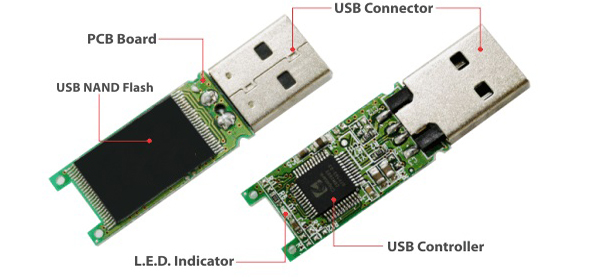Chips Used in Custom USB Drives: A Deep Dive into Portable Storage Technology
Custom USB drives have become an indispensable tool in modern life. These compact storage devices have come a long way since their introduction to the market. A fundamental part of their evolution and performance is the memory chip they use. In this extensive article, we will explore the different types of chips used in custom USB drives china factory and how they work, and how they have evolved over time.
Introduction to Custom USB Drives
USB drives, also known as USB flash drives or thumb drives, are portable storage devices that have revolutionized the way we store and transport data. Their compact design, durability, and ease of use have made them a popular choice for individuals and businesses looking to efficiently share, transport, and back up information.
One of the crucial aspects of a USB drive is its storage capacity, which largely depends on the memory chip it contains. Over the years, memory chips have evolved to offer greater capacity, speed, and reliability. Let’s explore the most common types of memory chips used in custom USB drives.
Types of Memory Chips in Custom USB Drives
1. NAND Flash
NAND Flash chips are the backbone of most custom USB drives. These chips use non-volatile memory technology, which allows them to retain data even when the device is disconnected from a power source. NAND Flash chips are divided into several types, including SLC (Single-Level Cell), MLC (Multi-Level Cell), TLC (Triple-Level Cell), and QLC (Quad-Level Cell). Each type offers a balance between capacity and speed, with SLC being the fastest but having lower capacity, and QLC being the largest but slower.
2. NOR Flash
Although less common in USB drives, NOR Flash chips are used in some devices due to their ability to provide faster access to data compared to NAND Flash. They are more suitable for applications where read speed is critical, such as in some computer boot systems and video game consoles.
3. USB Controllers
In addition to memory chips, custom USB drives also incorporate USB controllers that manage read and write operations between the memory and the computer. These controllers are essential for device compatibility and performance.
Evolution of Chips in Custom USB Drives
As the demand for greater capacity and data transfer speed has increased, memory chip manufacturers have worked diligently to develop more advanced technologies. This has led to several generations of NAND Flash memory chips, each with its own advantages and challenges.
1. Single-Level Cell (SLC) NAND Flash
SLC chips store a single bit of data in each memory cell, providing exceptionally fast write and read speeds. However, due to their focus on speed and reliability, these chips tend to have lower capacity and a higher cost per gigabyte compared to other types of NAND Flash.
2. Multi-Level Cell (MLC) and Triple-Level Cell (TLC) NAND Flash
MLC and TLC chips store multiple bits of data in each memory cell, allowing them to offer higher storage capacity at a lower cost per gigabyte. However, this increased storage density often translates into slower write and read speeds compared to SLC chips.
3. Quad-Level Cell (QLC) NAND Flash
QLC chips represent the latest evolution in NAND Flash technology and offer even greater capacity at a lower cost. However, this increased storage density significantly impacts write and read speed, making them ideal for long-term storage applications but less suitable for rapid file transfers.
Factors to Consider When Choosing Chips for Custom USB Drives
When selecting memory chips for a custom USB drive, it is crucial to consider several factors to ensure that the device meets specific needs. These factors include:
1. Capacity
Storage capacity is a key consideration. If you need to transport large amounts of data, you may prefer high-capacity QLC chips. On the other hand, if speed is paramount, SLC chips may be a better choice, although they offer less storage space.
2. Transfer Speed
Read and write speed is critical if you plan to use the USB drive for regular transfers of large files. SLC and MLC chips offer faster speeds compared to TLC and QLC chips.
3. Durability
Durability is essential if the USB drive will be used in harsh environments or exposed to shocks and vibrations. Some NAND Flash chips are more robust than others, so it’s important to consider this when choosing a device.
4. Cost
Cost per gigabyte is an important factor, especially if you are working with a limited budget. QLC chips tend to be more affordable in terms of cost per gigabyte, while SLC chips are more expensive.
Conclusion
Memory chips are the cornerstone of custom USB drives. The choice of the right chip type depends on individual needs for capacity, speed, and durability. As technology continues to advance, we are likely to see new developments in memory chip technology that will further enhance the performance of these devices. Custom USB drives will remain an essential tool in everyday life and business, and their performance will largely depend on the quality of the memory chips they contain.


 English
English



